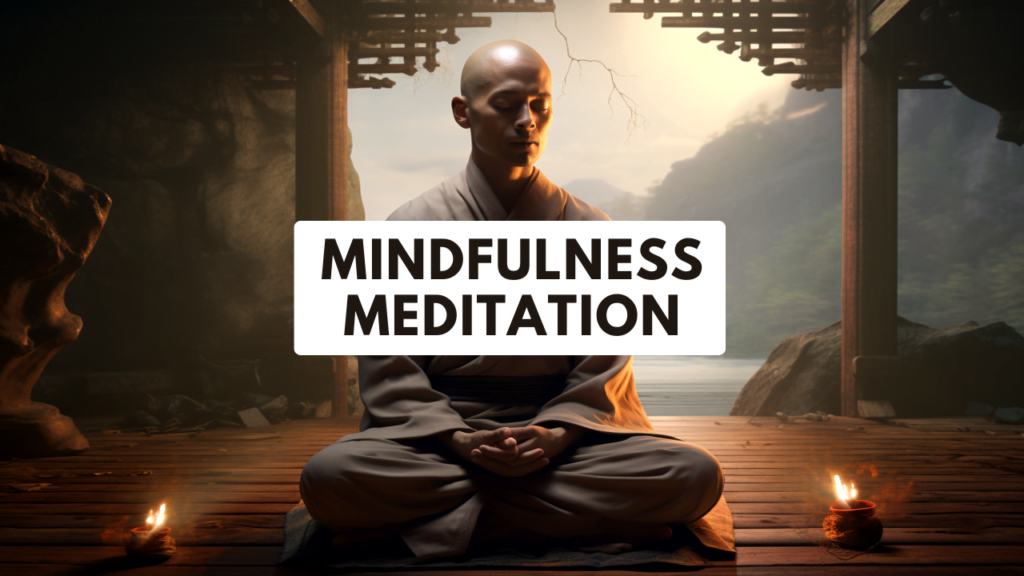Mindfulness Meditation: What It Is & How To Do It
The most basic form of meditation practice is simple mindfulness. Mindfulness is the core of all other types of meditation, so it’s important you master this skill before continuing on to other forms of meditation. What is Mindfulness Meditation? Mindfulness meditation is a practice where you become focused on the thoughts, feelings, and senses that arise in the present moment. The practice of mindfulness is the practice of being present. When you notice thoughts, sounds, and emotions you are becoming aware of what is happening now. The key to mindfulness is approaching the practice non judgmentally. Mindfulness allows us to see things clearly as they are right now. Mindfulness Historical Background The modern mindfulness we know today in the West is directly descended from Buddhism. The practice of mindfulness originated in Buddhist philosophy in 500 BCE. Mindfulness was made mainstream in the West due in large part to the efforts of Dr. Jon Kabat-Zinn. His work brought mindfulness practice from the East and turned it into the therapeutic practice known as Mindfulness-Based Stress Reduction (MBSR). How To Practice Mindfulness Meditation Let’s go over how to actually practice mindfulness meditation. 1. Find a comfortable location and position The first step in mindfulness meditation is finding a comfortable place to sit. This should be a location that is distraction free and comfortable. Sit in a position that you won’t get too tired in. There are all kinds of meditation positions, but a simple cross legged position on a pillow, chair, or grown will do just fine. Get yourself settled in this position and location before beginning meditation practice. 2. Bring attention to the breath The core of mindfulness is your ability to focus your attention. To foster this focus we set an anchor point to come back to for refocusing our attention. The best and easiest anchor point for your attention is your breath. Your breath is a constant force that you will always be able to come back to now matter where you are as long as you’re alive. At the beginning of your mindfulness meditation practice, bring your attention to your breath to begin relaxing and to get present. 3. Bring attention to the body After you focus your attention on your breath you can begin noticing other sensations in your body. A body scan is a great activity for this part of the meditation. Just bring your attention to every body part and notice how it feels. Does it have pain? Is it comfortable? Cold? Warm? As you bring your attention to those body parts just begin to relax the muscles in those areas. As your body relaxes, your mind will unwind with it and your mindful focus will improve as well. 4. Notice thoughts and feelings Once you have that mastered, bring your mindful awareness to your thoughts and feelings. What is the quality of your mind? Notice any recurring thoughts that keep popping up in your mind. Your job in mindfulness meditation is simply to notice a thought, hold it in your awareness and let it pass. You should not be trying to force yourself to stop thinking, rather just notice it nonjudgmentally. 5. Return to the breath Any time you find yourself too overwhelmed by your, body, or emotions simply return to your breath Our breath is our refocusing point throughout the meditation. Whenever you get lost or overwhelmed simply begin the meditation again by refocusing on your breath. If you’d like you can also make your breath the sole focus of the entire mindfulness meditation session. Bringing Mindfulness Into Daily Life Mindfulness doesn’t always have to be a strict discipline. You can bring mindfulness into just about anything you do. Bringing a quality of attention and presence to whatever you do can grow your mind and spirit by leaps and bounds. That’s what I love so much about mindfulness. You can bring it anywhere. Whether you’re practicing mindfulness meditation for spiritual or mental benefits, there’s no doubt about it… mindfulness meditation can have a profound effect on your mind, body, and spirit. Happy meditating!
Mindfulness Meditation: What It Is & How To Do It Read More »




